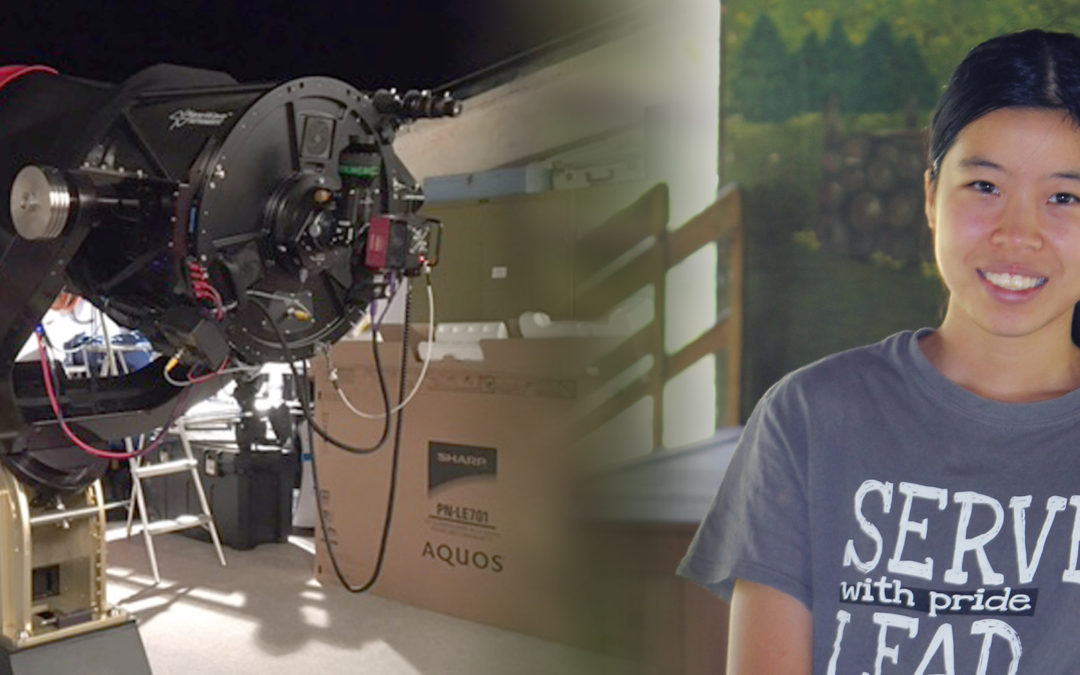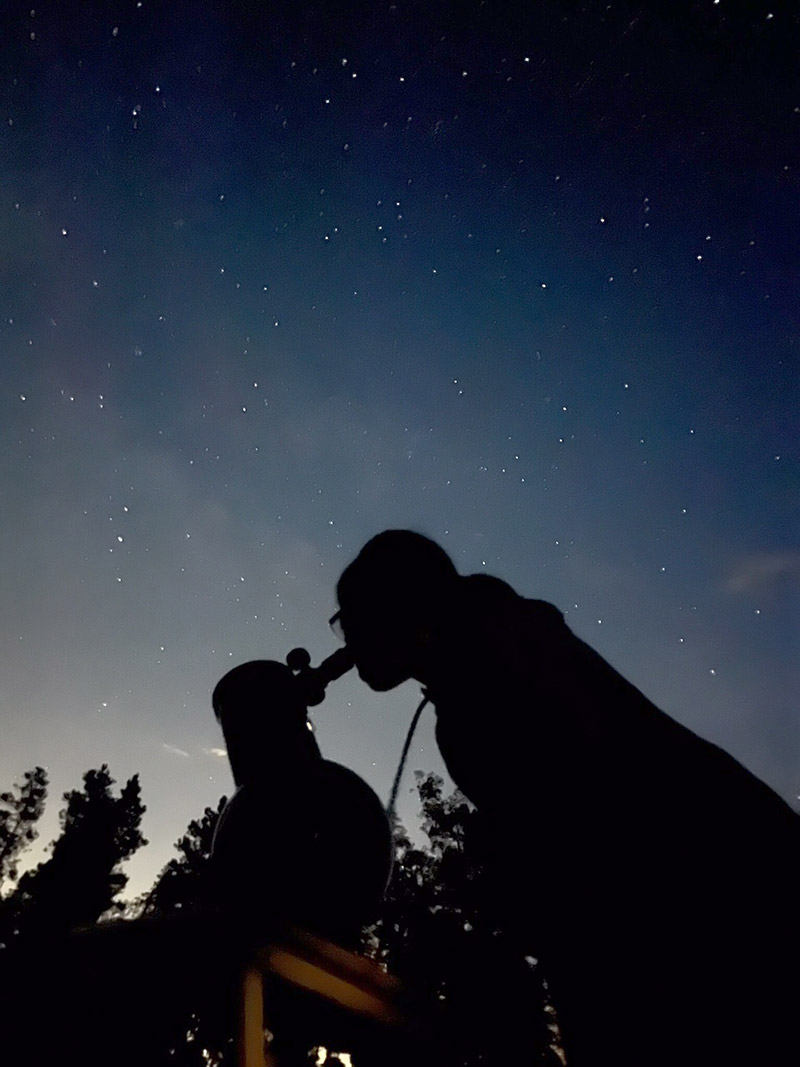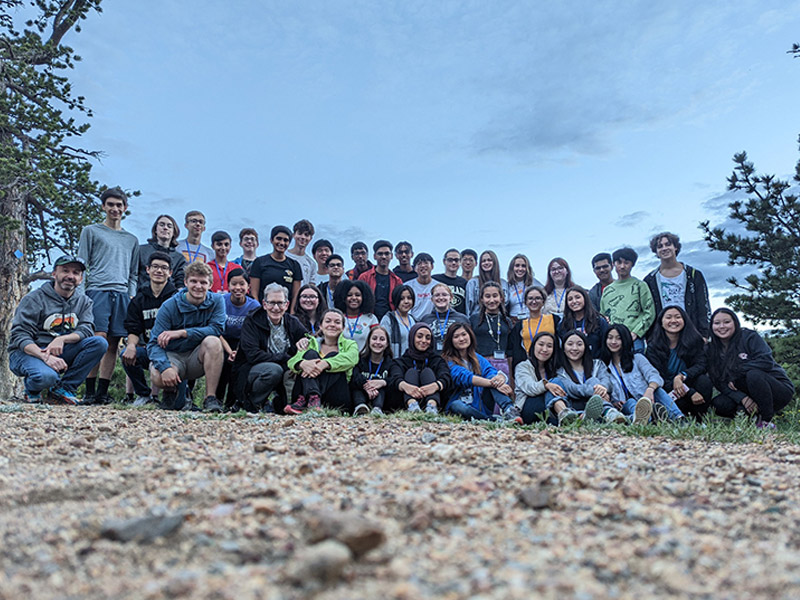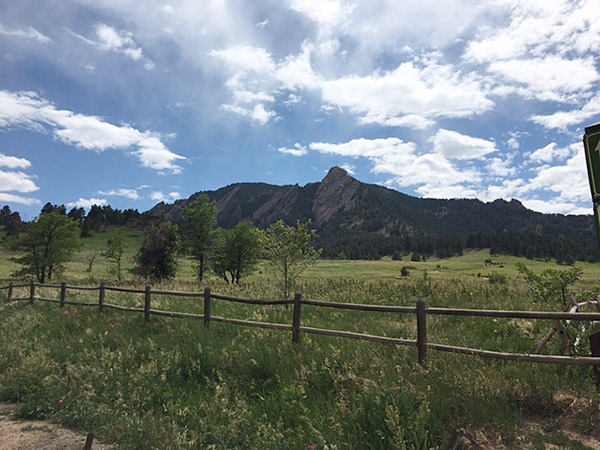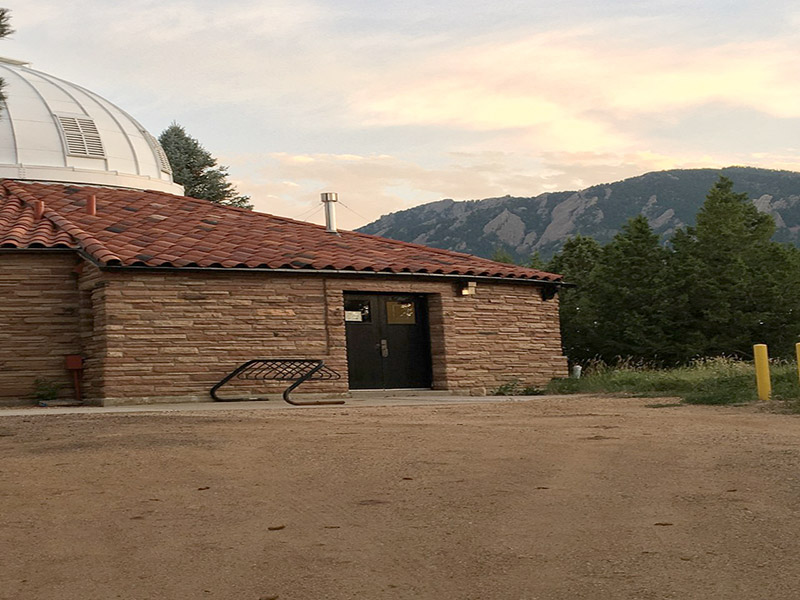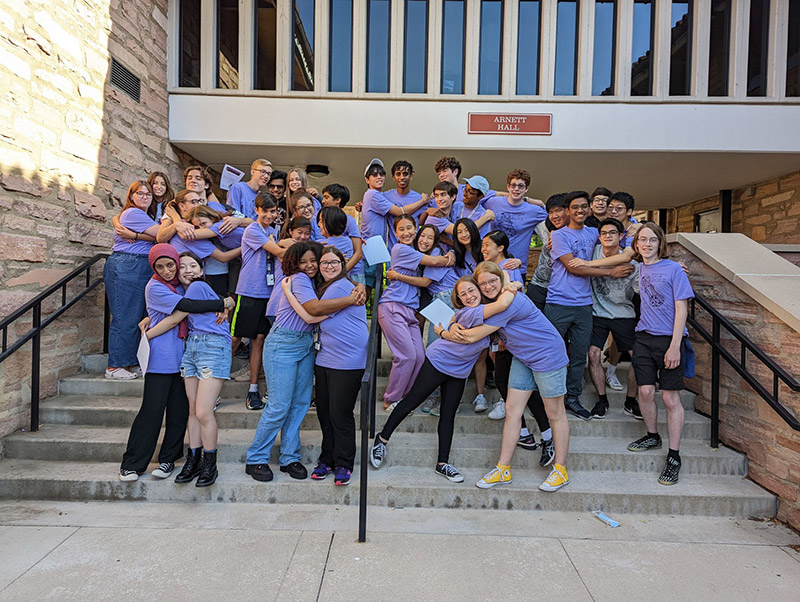Michelle Wang has been studying Astrophysics in the Summer Science Program at the University of Colorado, Boulder. Her first research project involved collaborating with her team to determine the path of a near-earth asteroid.
“The first week of SSP has passed and we are gearing up for the next. I think it has been the most academically intense week of my life. We have 6 hours of lecture Monday through Friday and 3 hours of lecture on Saturday. In the first week, we learned about uncertainty, vectors/matrices, calculus, celestial coordinate systems, photometry, and telescope technology. In addition to lecture, we have problem sets that we work on for around 4+ hours a night. SSP has a no personal computers rule which means that all the students work on homework together in the computer lab. The problem sets are hard, so it’s absolutely necessary to collaborate on them. It also makes them a lot more fun,” Michelle exclaims!
“Class and homework is only half of SSP. It is also a research program, meaning we are simultaneously working on a project applying what we learn to determine the path of a near-earth asteroid by the end of the program. On the first full day of SSP, we wrote asteroid observation proposals in our research groups. Two days later, observations began. My team was assigned to the 12 am -1 am observing shift. I never thought that I would stay up that late to observe asteroids every other day but now I do. We take images of our assigned asteroid using CU Boulder’s 20 inch telescopes. Using the images taken as data, we will write code to do orbital determination. Between homework, lecture, data analysis, and observation, I have been very, very busy,” Michelle adds.
Although the course work has been challenging, Michelle has been able to have fun, meet other students in the program, and make friends.
“Despite the immense workload, SSP has also been quite fun. The 35 other kids here are all wonderful, and we have grown surprisingly close in one week (probably a result of the long hours working in the computer lab). Spontaneous activities like soccer and card games happen frequently in addition to whatever chaos occurs in the computer lab. This week, we have also gone hiking in the Flatirons and visited Pearl Street Mall,” Michelle says.
Michelle reports that the second week of her course was more intense, with lectures, problem sets, coding problems, and assignments.
“Our lectures this week have covered different topics in physics, math, astronomy, and coding. Of course, we have also had lots of homework on these topics. Collaboration is a huge part of the SSP experience and it is becoming increasingly apparent that we must work together if we want to finish all the assignments in time. Working together in the computer lab at night forces us to understand the material and is also a great bonding experience,” Michelle explains.
“It has been a relatively cloudy week in Boulder, so we did not observe very much this week. Luckily, the late shift only gets cancelled because of weather, so we have been able to get three successful observations so far. We are currently learning how to utilize the images to calculate our asteroid’s orbital elements,” Michelle reports.
“Yesterday, we went on a field trip to Mud Lake and the Mountain Research Center, which is a dark sky site. After driving up a twisting mountain road for an hour in a somewhat questionable bus, we arrived at a secluded area where we set up some small telescopes and settled down to look at the Milky Way. I thought that Carbondale had relatively dark skies, but the sky at the Mountain Research Center was even more magical. Miraculously, the sky was clear for the two hours we were there. I even learned a couple constellations! I have attached 2 photos taken during the field trip,” Michelle adds.
“After two weeks of SSP, our group has definitely grown closer. Struggling over problem sets together at midnight builds close relationships quite quickly, but running through sprinklers late into the night, taking funny photos, and crashing the entire computer lab server with 400-body simulations are memorable moments too. I am very much looking forward to and slightly afraid of what next week will bring,” Michelle says.
Michelle reports that her third week at SSP has been even more intense.
“In morning lecture, we have sprinted through calculus-based physics, even covering Maxwell’s equations in one 3-hour lecture. These physics lectures are complete with awesome demos like melting a nail with a transformer, and demonstrating conservation of angular momentum by holding and tilting a spinning bicycle wheel to accelerate the person standing on a spinning platform,” Michelle .
“Our afternoon lectures this week have been entirely devoted to deriving the equations describing an asteroid’s orbital elements. The derivations are incredibly complex, and I honestly cannot wrap my head around how Gauss derived everything from scratch. I have seen more Greek letters this week than I have ever seen before (I have also seen way too many arrows and dots above and between variables),” Michelle says.
“Homework has also ramped up further. In addition to regular problem sets, we also have new orbital determination code assignments. This leads to long hours in the computer lab, sometimes causing the TAs to kick us out after midnight. Fortunately, I think that all this work is pushing me to find my limits and figure out how to both respect and break through them,” Michelle adds.
By the end of the week, Michelle and classmates were able to socialize at an SSP Alums Open House Night dinner featuring an alum guest speaker, enjoy CU Boulder’s campus planetarium, and form closer bonds with each other through a variety of activities.
“By the end of the third week, we have all become rather comfortable with each other. Impromptu karaoke sessions in the lounge, spikeball with our professors, and late night kitchen raids are the norm. Of course it’s not all fun and games as we help each other through the trials of psets, debugging, and unavoidable teenage drama, as well as figuring out the maximum number of people we can fit under a travel umbrella during one of Boulder’s numerous unannounced thunderstorms. I was skeptical when they told us on our first day that we would feel like a family before too long, but sitting in the lounge now, surrounded by scream-singing SSP’ers, I feel at home, and I know it will be hard to leave. But for now, we are happily laughing the night away,” Michelle says.
During Week 4 at SSP, Michelle and her team attended lectures, worked with problem sets, and focused on their orbital determination (OD) project. Students have been busy with photometry, astrometry, writing OD code, and planning the final OD report.
“Our lectures this week have become more abstract, covering topics like special relativity and quantum mechanics. We have also learned about some fun astronomy topics like intergalactic objects and different telescopes. On the observation deck, we have gotten another observation of our asteroid and even got to take a color image of the swan nebula,” Michelle reports.
“As the program goes on and work piles on, everyone is more strongly feeling the spirit of SSP’s community. Now, I always do problem sets together with a group of friends. We are somewhat predisposed to overthinking the problems to the point where we confuse our professors a little. This sometimes results in 2 hours of fevered problem-solving and screaming at each other (and our professor). I have attached a photo of the aftermath of one of these madness-inducing sessions. I never thought I would be in an environment like SSP where everyone is happy to puzzle over difficult problems and feels comfortable enough to yell about them to each other and our professors. It’s also during these moments that I realize how our sum is so much greater than our parts: only with our combined brainpower can we figure out the challenging problems and convoluted code that SSP loves to throw at us. As pressure builds towards our final OD report due this coming Friday, it’s the camaraderie between SSP’ers that will keep us going,” Michelle explains.
After competing their work, Michelle and friends had multiple opportunities to relax with fun activities.
“On Wednesday, we went go-karting, and I even got to drive the site director around. We also visited the Pearl Street Art Festival and hiked the Flatirons this weekend, which was a lot of fun,” Michelle adds.
During the last week of the SSP program, Michelle and her classmates spent most of their time writing code and working on their final orbital determination report, due at the end of the course.
“It’s hard to believe that SSP is coming to a close. We turned in our final orbital determination report yesterday. This week was quite stressful between writing code and drafting our paper. Yesterday was especially nerve-racking as we added a whole new section to our paper two hours before the deadline. Luckily, it got done, and I am proud of how far my group has come. After everyone turned in their papers, we spent the night playing volleyball, identifying a Starlink satellite, running through sprinklers, and generally hanging out together. A great feeling of relief has descended over all of SSP but with it comes some sadness that it is all ending soon,” Michelle reports.
“Aside from working on the OD paper/code (which took up about 95% of our time) this week, we also got to hear lectures from our TAs on topics of their choice. As such, I learned about quantum computing, the history and future of our universe, and memes as folklore. Today, we also got to see “Dr. D’s Wizard Show” in which our professor did a lot of cool physics tricks like making hydrogen fireballs, using a Tesla coil, and making himself disappear by clapping at the same frequency as a strobelight illuminating him,” Michelle says.
“Even though many of us are saddened by the prospect of leaving soon, we are trying to pack in a lot of fun in the last few days. Now that there isn’t as much pressure, we can do “pretty pictures” at observation and work on challenge problems at our leisure. I am looking forward to a few more chaotic problem sessions and late night hangouts (both chaotic and chill). I am also trying to absorb as much as possible from this awesome environment. I want to remember all that I can from SSP. It’s been the best summer of my life, and I hope to make more memories before we leave on Wednesday,” Michelle says.
“Thank you so much to the GFF for giving me this unforgettable opportunity,” Michelle exclaims!
Sounds like an exciting, challenging, and fun time was had by everyone. Great work, Michelle. We are so proud of you!
>> Read Michelle Wang’s final report (PDF file, 152 KB).
>> Learn about other students’ experiences in the GFF Scholarship Program.

